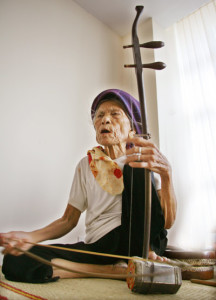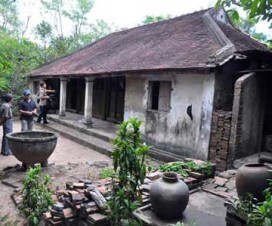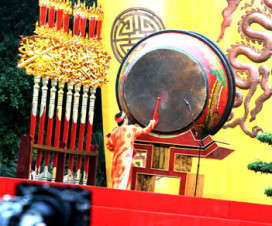Professionalism
Xam is a genre of folk songs in northern Vietnam. Xam is also a word used to call blind people who sing xam songs to earn money so hat xam is considered a job.
Many equate xam with beggars but they are different. Xam don’t live on free food or money but they live on offerings from people. Before receiving tokens, they have to win people’s hearts with their voices and music.
In the first half of the 20th century, xam grouped up to travel everywhere. Each group was often led by a group leader, who was a blind man.
The word “professional” is needed to describe xam, who earn their living by singing. The professionalism of this job is also shown through the organisation of xam groups, which are linked with each other under the control of a leader.
Normally, each xam leader controls an area. If a xam group wants to sing in another area, it needs the agreement of the xam leader who controls that area.
It is also professional in the way xam choose sad or merry melodies to be appropriate to the circumstance and the attitude of listeners.
Hat xam’s founder is a prince?
Normally, only jobs related to production have founders, but hat xam also has a founder. And the founder of hat xam is a dignitary, Prince Tran Quoc Dinh.
According to legend, in the Tran Dynasty, there were two princes, Tran Quoc Toan and Tran Quoc Dinh. As both sought the crown, a power struggle ensued. During an altercation, Tran Quoc Toan tore out Tran Quoc Dinh’s eyes and threw him into the forest.
Tran Quoc Dinh couldn’t do anything but cry. He fell asleep. In a dream, a Buddha appeared and gave him a musical instrument which was played with a bamboo rod. Upon awakening, he made the musical instrument based on his dream. It was odd that the instrument created sweet sounds. Hearing the sound, birds brought fruits to him. Some lumbermen heard the sound and took care of him.
Prince Tran Quoc Dinh taught poor and blind people how to play the instrument and sing as well. He became famous, even in the capital. He was invited to sing in the royal palace, where his father recognised his son. Even after returning to the palace, the prince continued to teach poor and blind people.
Hat xam was born then and Tran Quoc Dinh was honoured as the founder of hat xam. Xam consider the 22nd day of the second lunar month and the 22nd day of the eight lunar month as the prince’s death anniversary and the founding anniversary of hat xam.
The Vietnam Music Art Development Centre has an award in the name of Tran Quoc Dinh for artists, collectors, researchers and journalists who make great contributions to traditional music
Based on the characteristics of this job, the anniversary is often organised on wide plots of land, not in a temple or a fixed place.
Restoring hat xam anniversary
Hat xam and hat xam anniversary was popular in the 1950-1960 and it disappeared after that. In 2008, the Vietnam Music Art Development Centre resumed the anniversary for the first time at Van Mieu – Quoc Tu Giam (Temple of Literature). This is part of a programme to restore hat xam art conducted since 2005.
Restoring the anniversary is also the aspiration of the living treasure of hat xam, artisan Ha Thi Cau.
This year, the second anniversary will be held at the communal house of Hao Nam village, on Vu Thanh street. According to musician Thao Giang, who initiated the resumption of this anniversary, as of 2009, this anniversary will be organised annually at this communal house.
It is pity that this year artisan Ha Thi Cau will not attend the anniversary because she is very weak now. After the anniversary, some xam singers will go to Ninh Binh province to visit the latest famous xam singer of the 20th century, Mrs. Ha Thi Cau.





